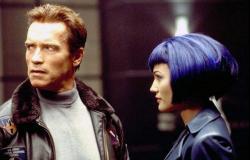In Civil War, director and screenwriter Alex Garland, tells of an American civil war in a contemporary context. Much more, he leaves aside any type of analogy, to delve into a cruel and violent realism. Lee (Kirsten Dunst) is a journalist who travels through a divided country, besieged by a fratricidal confrontation and in the middle of a social explosion. Little by little, the photographer will discover that the conflict is about to not only devastate the country and its culture, but also with each element that supported a certain social order.
But one of the questions that is not answered in the tape is how it got to that point. Information is provided, indirectly and in subtext, but it is never fully shown what happened to lead to such a situation. However, one thing is clear. What ended up fracturing the United States in fiction is more than just a dispute for power or a confrontation between traditional enemies. In Civil War, There are no good or evil. Nor is it friction between political opponents taken to the field of weapons. What makes the conflict more realistic and simple than just extrapolating a current conflict to a cinematic premise.
So what is really happening in Civil War? We tell you the — scarce — data that the script offers and how they are structured to create a story with true overtones. From a break in the constitutional order to two unlikely allies. Alex Garland managed to delve into a creepy premise because of how solid he is. No political system is safe from rapid deterioration.
It all starts in Washington
In Civil War, the conflict begins — or at least, that is what the script suggests — with an event of a political and legal nature. The president (Nick Offerman, of The Last of Us and The Office), is in his third term. In several scenes, you can see speeches and also concrete insinuations about this direct violation of the 22nd Amendment of the US Constitution. This indicates that no one can be elected more than twice as leader of the nation. Which means that, sooner or later, There was a break in the legal thread, whether due to some spurious sentence or force.


Everything seems to get worse when it is indicated that due to this position, the official had to act in one way or another to retain his place in the executive branch. Which means attacking with the monopoly of weapons anyone who has opposed him, dismantle offices and institutions and pressure to continue legislating in their favor.
One of the most interesting points of the film is that all of the above is shown in details open to interpretation or not too direct. Which allows the film to leave open several questions. Does anyone oppose such a process, which sentenced American democracy to its fall? Who are the enemies of such a corrupt political leader?
Two unlikely allies in ‘Civil War’
One of the most interesting points of the film is that its vision of the conflict does not lead to any real confrontation being fictionalized. In fact, Civil War does not speculate on current political movements. The enemies of the fascist government in Washington are not Democrats or Republicans. Neither, far-right or left. They are two opposites who had to join forces to avoid a government that only seeks to perpetuate itself in power.


On the one hand, there is Texas, which, as implied in the film, decided to bring its weapons and contingents of soldiers against the central government. At the other extreme, there is California, which joined with the intention of preventing an authoritarian leader from continuing in the White House. In fiction, both states left aside their antagonistic positions, to advance and wrest control of the country from the acting president.
The unique thing about Garland’s decision was to maneuver around all the current ideas about the positions before the power of both states. Today, Texas is known as a Republican stronghold, in addition to its positions close to the far right. For its part, California is a Democratic enclave and traditionally, aligned with moderate left ideas.
Battle of ideas in ‘Civil War’
This strange political map means that, in fiction, North America is in the middle of three forces that threaten to disintegrate the nation. At one extreme, a president with authoritarian inclinations and with all the weapons of the country at his disposal. Another, with two states that have their own weapons and are willing to confront Washington.


Finally, a large and extensive territory in chaos, which is aggravated by groups of citizen militias and also mercenaries of all kinds. Finely, Alex Garland’s film reinterprets the idea of two violent fronts in dispute, in the broadest and most complicated scenario possible. What makes Civil War both a warning and a disturbing look at a dystopian future.










